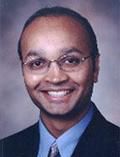End of life: Doctors, patients need rapport
Published 12:00 am Sunday, January 5, 2014
Dr. Chetan Amin said his family has considered discussing his parents’ wishes for their end-of-life care but they’re not there yet.
“We came close to talking about this topic,” he said. “It will probably take a few more of these types of meetings.”
Amin was part of a panel discussion with three other area physicians during a recent daylong hospice seminar. He is a physician with Rowan Hospice and Palliative Care.
Other members of the panel included Dr. Randall Schisler, a palliative care physician with CMC NorthEast; Dr. Ted Clontz, a family practitioner with Novant Medical Group in Charlotte; and Dr. William M. Brinkley, a hematologist/oncologist with Carolina Oncology Associates. The title of their discussion was “Got Plans? I thought YOU were going to bring it up.”
The family doctor’s perspective has come a long way in the past several years because of the hospice movement, Clontz noted. “There’s just a lot of education out there and we all want to partake. There are so many benefits of hospice. We want to move things forward and begin discussions early. We all know it comes too late.”
These discussions with a patient’s primary care physician don’t happen overnight, Clontz admitted. “It’s a process.”
Schisler said that the days of physicians making decisions for patients is no longer medically appropriate. What types of measures are appropriate? Part of the panel’s discussion centered around the use of CPR, for example.
The survival rate for CPR is 15 percent, and that’s in a hospital setting. In the community, that rate drops to only 2 percent.
“These are heroic, massive, extreme measures when you have died and we are trying to bring you back to life,” Schisler said.
“A lot of what we do involves palliative care,” Brinkley said. “When we first meet patients, we know ultimately, we’re going to discuss these issues.”
On the other hand, Brinkley said, “it’s amazing what people will do for a 1 to 2 percent chance of improvement.”
Brinkley said that the hospice movement has taken hold since he graduated from medical school.
“There’s no class for this,” he said. “You don’t know how to sit and talk with your patients about these issues. We’re not gonna be able to get everybody better, and that’s OK.”
“Some people draw the line between living and existing,” Schisler said.
Schisler went on to talk about what palliative care is. It is a specialty area for patients who are really sick. It addresses the pain and symptoms of the disease, but does not try to cure the disease.
The goal is to maximize pain relief and quality of life. It can be mixed with more aggressive treatment at times, but the ultimate goal is a patient’s quality of life.
So how do physicians bring up the idea of hospice care?
“We are not trying to give up hope,” Amin said.
“The hope is that you have a good rapport with the patient and family,” Clontz said. “There should be planning here as in other parts of life.”
Brinkley agreed.
“Rapport is a big thing,” he said. “You get to the point where treatment does not extend life. I describe hospice as an extension of my care to maintain a patient’s quality of life for as long as possible.”
“We have a whole team now,” Amin said. “The hope changes. It’s just a shifting of that hope. We are really potentially opening up hope.”
“There is a thought among physicians that aggressive care is the best care,” Schisler said. “But that is often not the case. We often undervalue the burdens and risks of treatment. Hospice can help patients live longer and better.”
The panel members stressed the importance for patients to make their wishes known to their family.
“It helps me take care of my patients better if I know their wishes,” Amin said.


